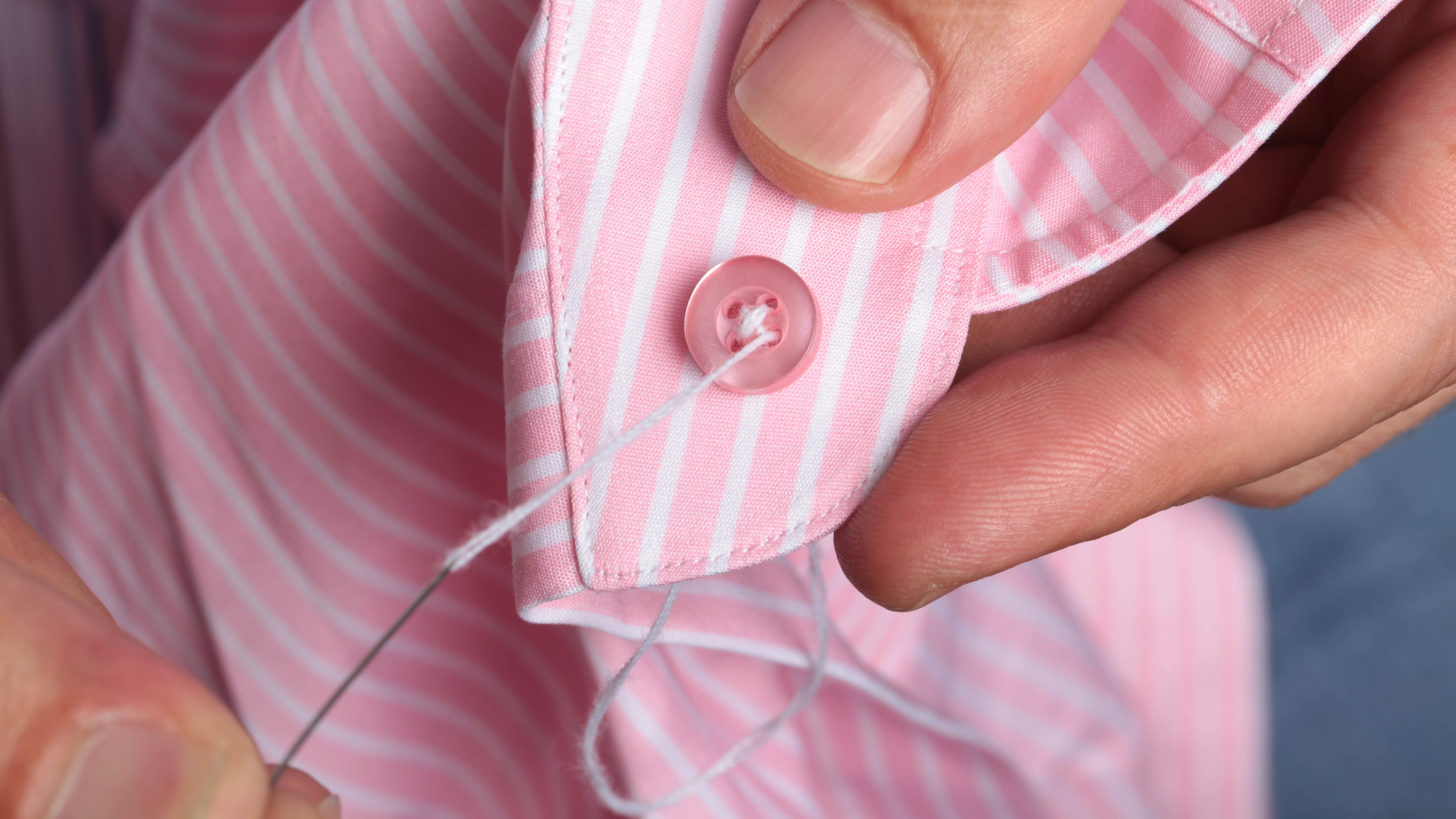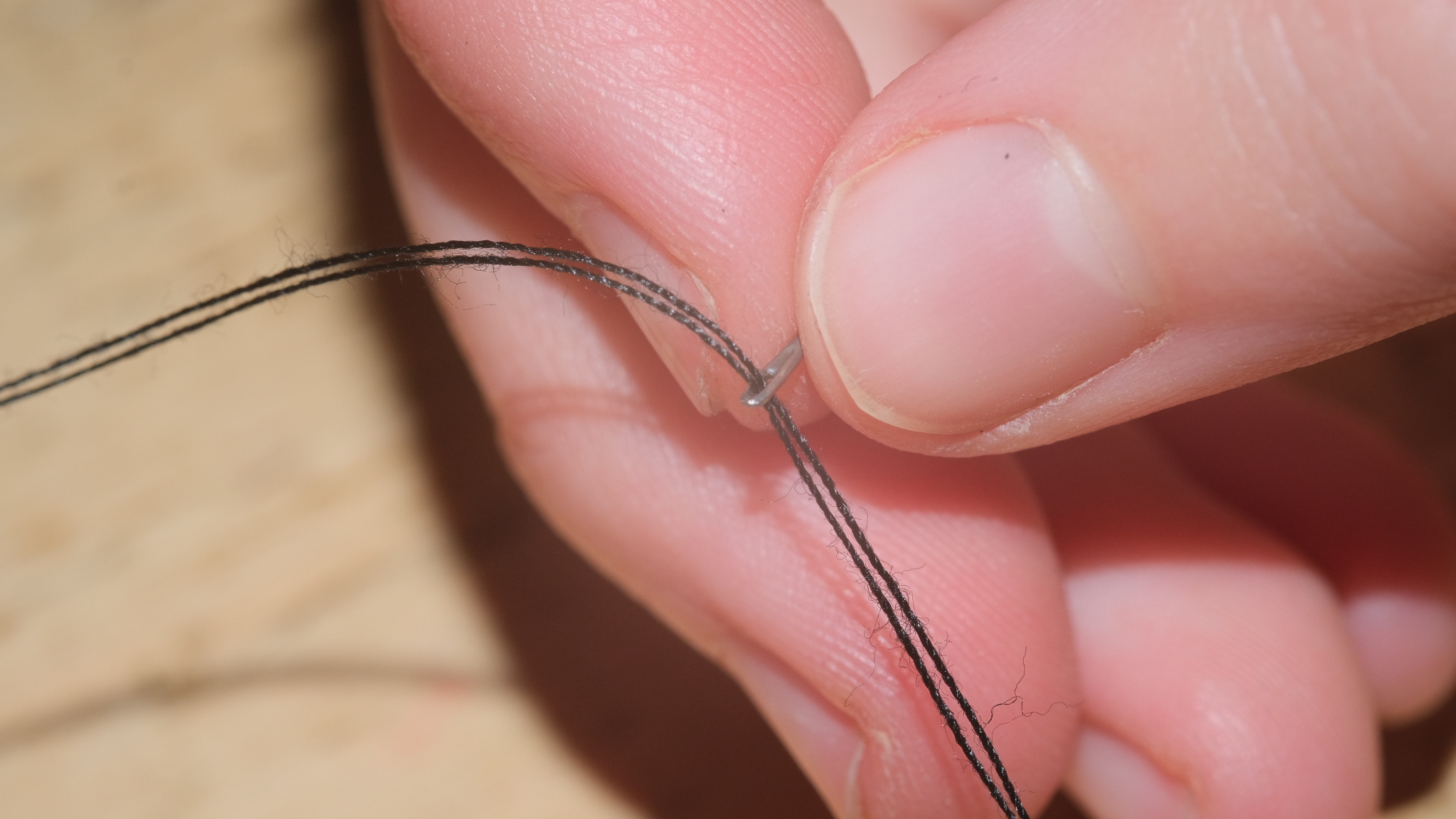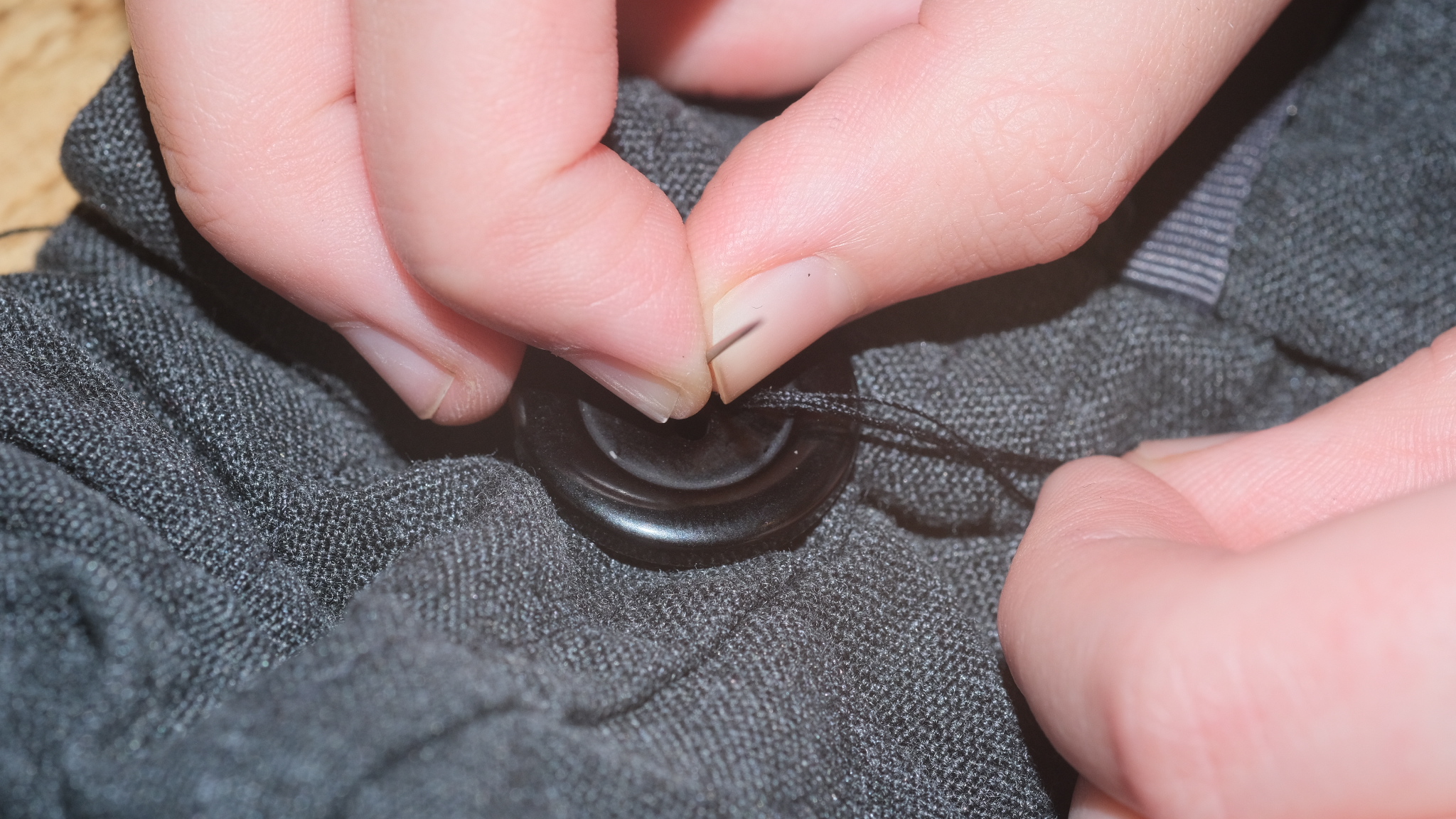How to sew on a button in a few simple steps

Knowing how to sew on a button can save a lot of frustration, not to mention money. If a button has just popped off your favorite coat or shirt, then there’s no sense in throwing it away. It can easily be repaired and you really don’t need a professional to do this — sewing on a button takes minutes once you’ve got the method down.
Here, we will take you through exactly what to do step-by-step. So whether you’re a novice, or haven’t sewn in a while, you can tackle this chore with confidence. You might already have what you need at home — so don’t put it off and don’t throw it away. Here’s how to sew on a button.
Are your sweaters covered in small balls of fuzz? Here's how to remove pilling from clothes.
How to sew on a button
Needle
Thread
Scissors
Button
1. The traditional two or four-hole button can be refitted in a few simple steps, but before you do anything, make sure you’re under a good source of light so you can see what you’re doing clearly.
2. If you’re removing and replacing a button, first cut the button free using your scissors. Be sure to pull the button taut from the fabric as you do and then cut as close to the button as possible. This prevents you from accidentally damaging the fabric. Don’t force the button free if it doesn’t immediately come loose — just keep snipping at the thread. Once free, pick off the remaining thread from both the button and fabric. Now you’re ready to reattach it.
3. The first step is to thread your needle. Cut off two strands of about 24 inches of thread, then align them together. It’s important to use two stands rather than one as this gives it more strength, and will ultimately make your button more secure.

4. Then, tie a knot at one end of the two stands. This acts as your ‘anchor’ so the thread won’t pull loose as you stitch. You essentially want the knot big enough so it won’t pull through — one knot is usually enough, but you can double it and tie another knot on top to be safe if you want. Then cut off the excess thread after the knot so it looks like your strands end with a knot.
Get instant access to breaking news, the hottest reviews, great deals and helpful tips.
5. Thread the unknotted end of the strands through your needle’s eye. If you’re struggling with this part, I sometimes find it helpful to dampen the ends of the thread to seal them together before threading.
6. Pull the thread through the needle until the strand is about half way down to the knot. You might also want to adjust the strands so both are taut and even. If one is looser than the other, you can end up with bulging strands as you sew.
7. Now the needle is thread, you need to prepare to sew your button. Place your fabric down and work out exactly where the button should go. You can do this by simulating it being buttoned up.

8. Mark this position by bringing your needle up through the fabric, from the underneath to the outer layer, and create a tiny ‘x’. This not only marks where the button will be, but it also reinforces the anchor. To create the ‘x’, you need to thread the needle up and down in a single diagonal pattern. Remember to keep it smaller than your button — you don’t want to see it once everything is said and done.
9. Place your button on the ‘x’ and hold it in place with your finger, then bring your needle up through one of the button’s holes from the underside of the fabric — it doesn’t matter which hole. Watch your fingers aren’t covering any of the holes at this stage.
10. Then, while keeping the button in position, bring the needle and thread back down through the opposite diagonal hole. If you’re replacing a two-hole button, simply use the opposite hole. Pull it taut and you should have a single diagonal thread holding your button in place. Repeat this step three times, until the thread looks much thicker on the button. If you’re using a two-hole button, repeat it five times and skip to step 12.

11. Now you want to use the exact same method on the remaining two button holes, crossing over the top of your first thread. Remember to keep pulling taut after each thread. Your button should now look as good as new, you just need to make the finishing touches and secure it.
12. If your fabric is particularly thick, or if your button needs a little more room when being fastened, you can create a shank. If you’re not sure you can check the other buttons to see if they have this. It’s essentially thread wrapped around the underside of the button between it and the fabric — it gives a bit of added space between the two.
13. If you want to add a shank, simply bring your needle up, as if you were about to come through one of the button’s holes, but before you meet the button, bring your needle out to the side so you miss it. Your thread should now be on the outer side between the button and fabric.
14. Now wrap the thread around the base of the button three times, before threading it back to the underside; this creates a shank.

15. The final step is to secure the thread. To do this, squeeze your needle under one of the newly sewn stitches on the underside and pull it through, but don’t pull it taut just yet. Pull it through until you’ve got a small loop, then pass your needle through this loop and pull it tight. Do this two to three times to make sure it’s secure.
16. Finally, cut your needle and thread free, being careful not to damage what you’ve just sewn. There you have it, you’ve sewn a button.
TIP — It’s always a good idea to save rogue buttons, even if you don’t know what they belong to. Buttons can sometimes come loose while you’re out and about, and one of your old buttons might be a good fit for a replacement.

Katie Mortram used to be a Homes Editor for Tom's Guide, where she oversaw everything from kitchen appliances to gardening tools, as well as smart home tech. Specializing in providing expert advice for cleaning and home manintenance, she now works as Household Advice Editor for Good Housekeeping.
